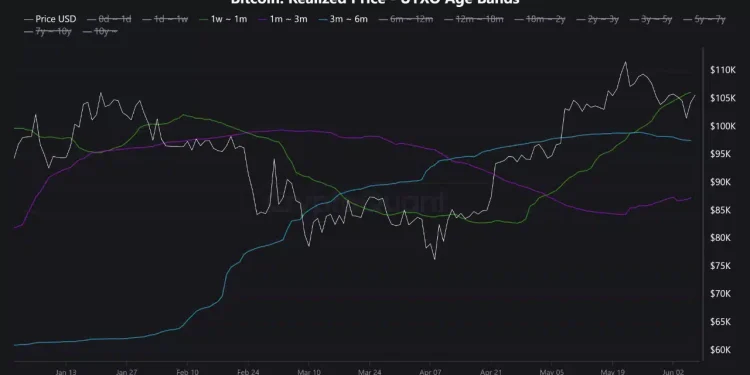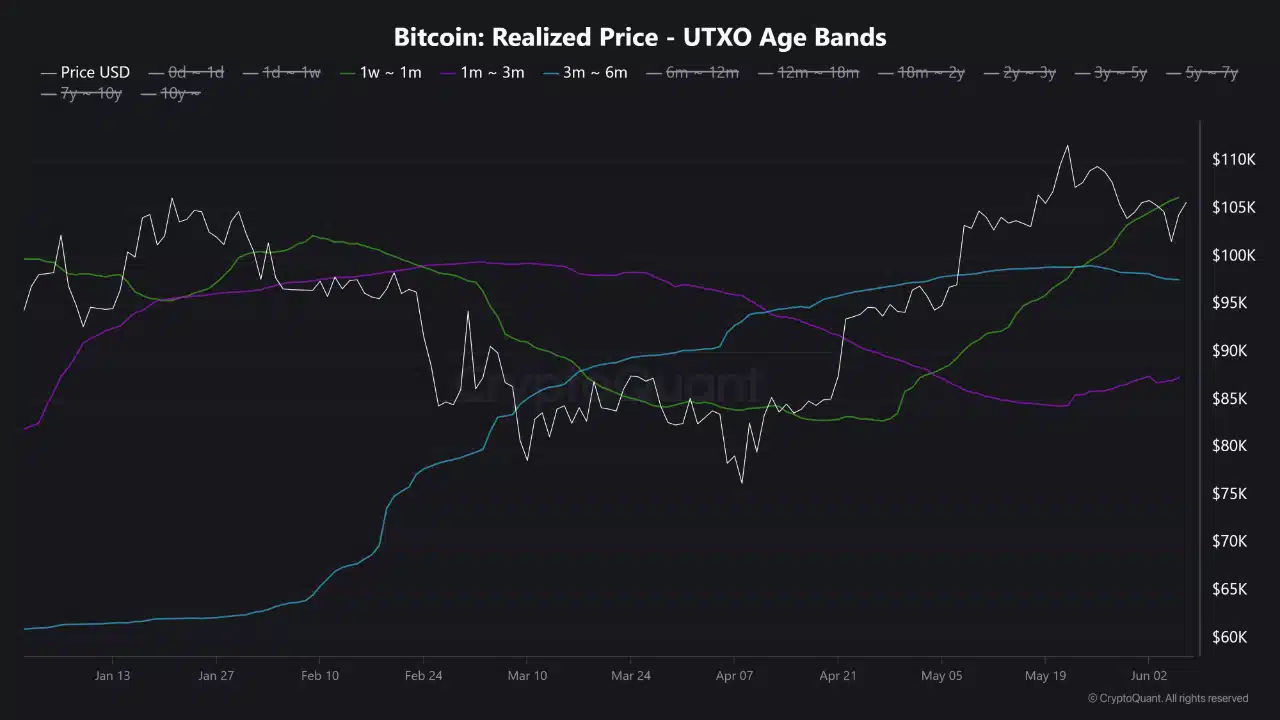- The resistance to the short -term support of the BTC is aligned with the accumulation of whales and the profitability threshold nearly $ 106.2k.
- The increase in TNV and the indicators of Momentum of weakening indicate prudence despite the bullish signals on the chain.
Bitcoin (BTC) Short -term holders currently have separate entry areas, the cohort from 1 week to 4 weeks on average $ 106.2K, while those of 3 to 6 months are nearly $ 97.5K.
This divergence puts in place a crucial psychological battlefield. While the BTC exchanged almost $ 105,606 at the time of the press, those approaching the profitability threshold can rush to sell, adding resistance nearly $ 106.2,000.
However, buyers anticipating a drop could treat the level of $ 97.5,000 as a discount zone.
This dynamic could determine if Bitcoin breaks out or reverses down, according to the cohort dominates the action of short -term prices.
Do whales report renewed confidence with this entry flow rate?
Intotheblocs confirm a major behavior change: large support entries increased by 254.46% in last week, while outings fell by 53.86%.
It is a strong bullish divergence – showing that whales accumulate and hold, not coming out.
This inverse trend reflects an increasing conviction that current prices offer value, in particular with the consolidation of the BTC as part of the $ 106,000 ceiling.
This behavior can provide enough liquidity support to strengthen the level of $ 97.5,000 and potentially return $ 106.2K in an escape area, provided that this whale activity supports.
Is the BTC Croissant NVT Report a warning sign for the overvaluation?
The BTC NVT ratio jumped 55.38%, reaching 49.47 – clarifying a widening difference between the price and the volume of network transactions.
This clear increase suggests that market capitalization extends more quickly than real chain use. As a rule, such a divergence implies an overvaluation and indices to a reduced organic activity.
Of course, NVT points do not guarantee a reversal. But when associated with signs of weakening momentum, they often mark exhaustion at the top.
Does the stock-Flux model still be weight after a decrease of 25%?
The stock / flow ratio fell by 25%, weakening the story of the BTC shortage.
While the dynamics of the circulating offer lose the influence, the traders seem to focus on real -time data such as inputs, outputs and basic costs of costs.
This change reflects increasing skepticism towards the evaluation models focused on half, in particular because macro-waonditions and institutional liquidity play a more important role in the discovery of prices.
Consequently, while the flow for flow remains a long -term model, its short -term impact continues to fade.
Will the momentum fade while Bitcoin compresses under critical resistance?
The BTC remains trapped between an ascending trend line and the keys resistance cluster nearly $ 106.2K. This level includes the basis of the cost of the short -term holder and the Fibonacci trace area.
In addition, MacD shows signs of discoloration, with a possible bearish crossover developing.
Together, these factors paint a painting of indecision. If the bulls cannot recover control over $ 106,000, the price may drop to $ 97.5,000.
However, a high escape greater than $ 106.2,000 could erase the path to $ 110,000 and beyond.
Can BTC exceed resistance or sellers take control?
BTC’s ability to recover $ 106,200 is based on whether whale entries can prevail over the recent buyers’ pressure sales panel.
Currently, the entries seem strong, but the momentum cools.
If the whales continue to stack it and the NVT stabilizes, a break is possible. Otherwise, sellers can find an opening – and the level of $ 97,500 will be tested again.







